Buttock pain, sometimes known as Deep Gluteal Syndrome, is commonly seen in clients from our physiotherapy practice. Perhaps you have experienced it yourself and are wondering why you have it, or how to fix it. This article aims to answer the question “Why do I get buttock pain?” and give some strategies to fix it.
Buttock pain can be specific to your gluteus muscles, or it can start anywhere in the lower / lumbar region of your back and run through the buttock and down one of your legs.
It can present in a variety of ways such as tightness, burning, heat or tingling sensations.
The following article will explore the reasons why you may get buttock pain and the five ways you can help relieve buttock pain including some treatment options.
Why Do I Get Buttock Pain?
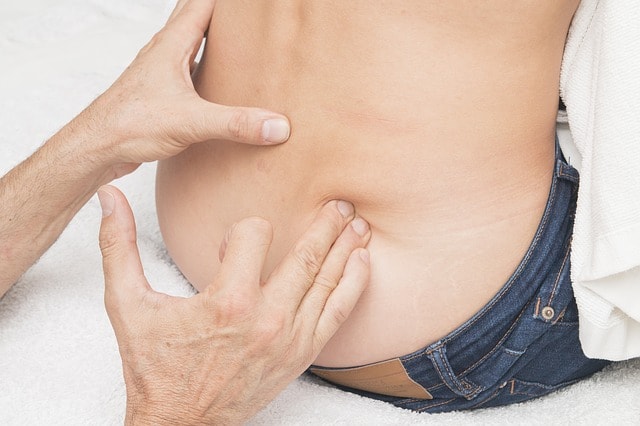
Firstly, it’s important to note that buttock pain typically presents as a symptom of a number of different health conditions. This means it is likely being caused by an additional issue within the body. According to the NHS, Buttock Pain is commonly associated with sciatica, and if left untreated can continue to get worse (NHS 2022).
Piriformis syndrome can also be another reason for your buttock pain (NHS 2020). While they are located in similar areas of the body and often referred to interchangeably, these are in fact different. But they can and do sometimes interact and affect one another.
Sciatica or Piriformis Syndrome | What is the Reason For Buttock Pain?
Sciatica refers to the pain from the sciatic nerve that is most often caused by a herniated or bulging disc, or pressure on the lumbar region of the spine. It is typically a sharp, shooting pain that may prevent you from being able to perform much movement. Because of the length of the Sciatic Nerve, the pain may run from your back into your buttock and all the way down one leg.
Your Piriformis on the other hand is a muscle embedded deep in your buttock. It’s an important muscle for the movement of your hips and your pelvis. If your buttock pain is isolated specifically to your gluteus and is causing numbness around this area it is likely caused by your Piriformis.
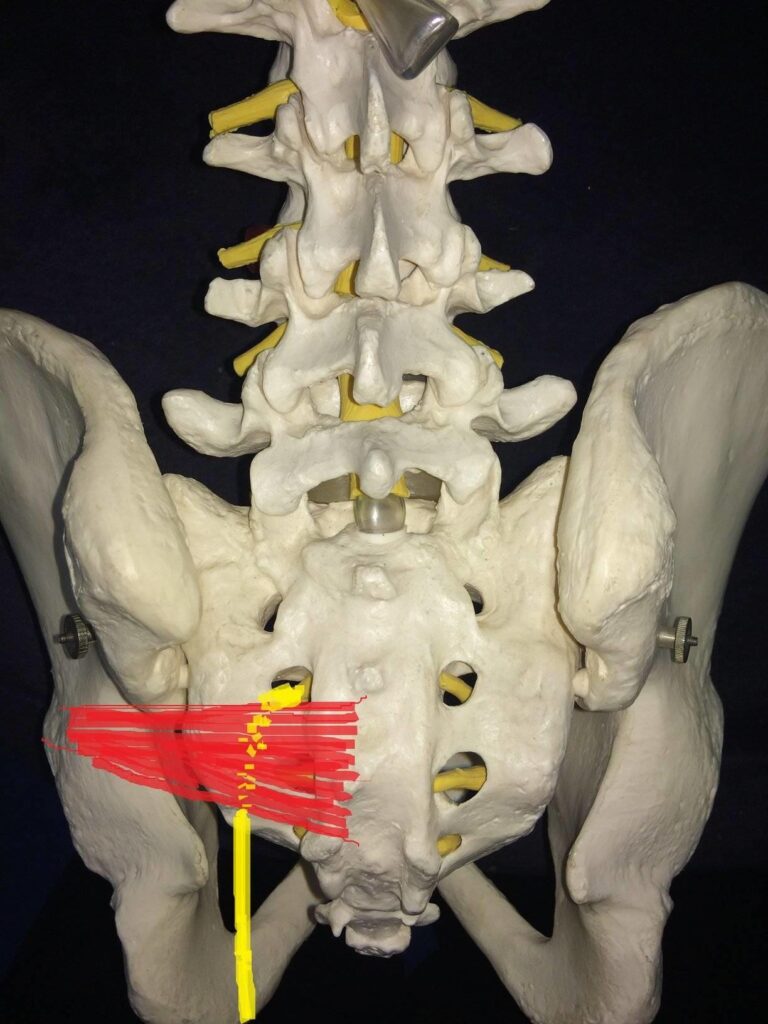
There are of course additional reasons you may be experiencing Buttock Pain such as:
- Bruising
- Muscle Strain
- Herniated Disc (a common cause for sciatica)
- Join Dysfunction
- Arthritis
- Vascular Disease
We always recommend speaking with a professional to help diagnose and treat this issue. Do not self-diagnose and consult your GP before trying any treatments.
Understanding where your buttock pain comes from is an important step in the treatment of your pain.
How Can I Relieve Buttock Pain?
Regardless of where your buttock pain is coming from, I really empathise. Continual pain whether chronic or acute can be exhausting and frustrating. It can also create additional problems since it may affect your natural or neutral posture and your ability to perform simple day-to-day tasks, even sitting.
But before you lose hope, remember that treatment is available. To help you understand what may have caused the problem think about the range of movements you perform on daily basis, and consider what is the most uncomfortable or painful. This may help you in understanding where the stress may have started.
FIVE Ways to Help Relieve Buttock Pain:
#1: Stretching to Relieve Buttock Pain
Stretching can alleviate stress on certain muscles by improving flexibility and range of movement. Stretching can work as a short term pain relief but is even more effective as a form of ongoing prevention.
It’s good to become familiar with your body enough so that you feel confident with how a good stretch should feel. Always remember that a stretch should NOT be painful.

The stretches and recommendations you see on this website are simply for informational purposes – we always recommend checking with your doctor first if these are appropriate for you.
Of course, not all of these exercises will be right for everyone and choosing the right stretches for you can be a game of trial and error.
Please take caution when exploring the different stretches to assist with your buttock pain. As it can be caused by bulging or herniated discs, it’s important to be mindful of any stretches you should NOT be partaking in.
I have written an article about Symptoms and Treatment for bulging discs here, and Symptoms and Treatment for Herniated discs here.
The following stretches are generally great recommendations. But it is ultimately up to you to decide whether they feel comfortable. Remember that stretching should NOT be painful.
Below I have recommended the THREE best, low-risk stretches to relieve buttock pain and increase mobility. Use a yoga or pilates mat to perform your stretches as this will create cushioning between you and the floor.
1. Knees to Chest
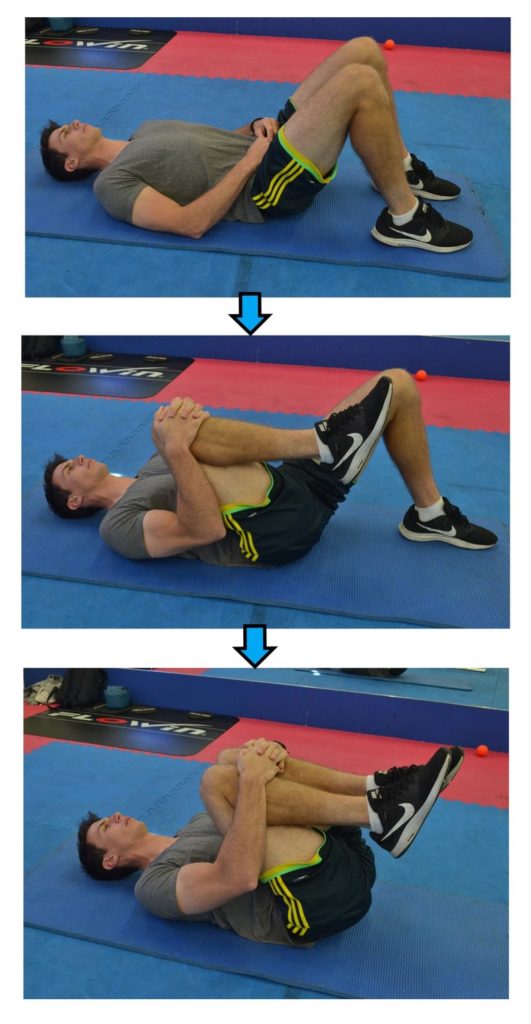
Who is this stretch for?
This stretch is appropriate for anyone but I strongly recommend this to desk workers. This can be especially helpful for people who are 50 or above, or have lower mobility as it requires less flexibility. This may be uncomfortable or painful if you have a disc bulge and so therefore should be avoided.
What does this stretch do?
This is a great stretch to alleviate buttock pain that may run from the lower back and down into the leg. This will help to stretch out the hip flexors which can become very tense when sitting all day.
How to do this stretch:
- Lie on your back on the floor with your legs extended straight out.
- Bend one knee and hold your shinbone with your hands.
- Gently pull your knee toward your chest as far as you’re COMFORTABLE.
- Hold the stretch for 20 to 30 seconds
- Then relax for 20 to 30 seconds.
- Resting in between is just as important as the stretch.
- Repeat on the other side; then repeat the entire sequence about four times.
- TIP: always keep your back to the floor.
2. The Piriformis Stretch
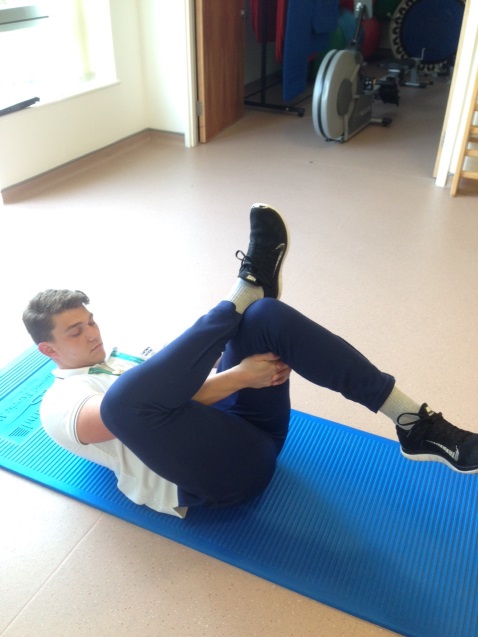
Who is this stretch for?
Most people with buttock pain, as long as they can perform the stretch in comfort. Not ideal for anyone who has current neck problems.
What does this stretch do?
This exercise opens the hips, which can help relieve buttock pain from sciatica.
How to do this stretch:
- Lay on your back with knees bent and feet flat on the floor.
- Cross one leg over the other, so that your ankle is resting on the opposite knee.
- Grab around your leg with the foot still grounded and hold onto your shin.
- Pull your leg gently towards your chest so that your feet separate from the ground and until you feel a stretch in your buttock and hip.
- Hold the stretch for 20 to 30 seconds
- Then relax for 20 to 30 seconds.
- Repeat on the other side; then repeat the entire cycle four times.
- Tip: Keep your head and neck to the floor.. Lifting of the neck will cause strain.
3. Gluteal Stretch (Sitting Rotation Stretch)
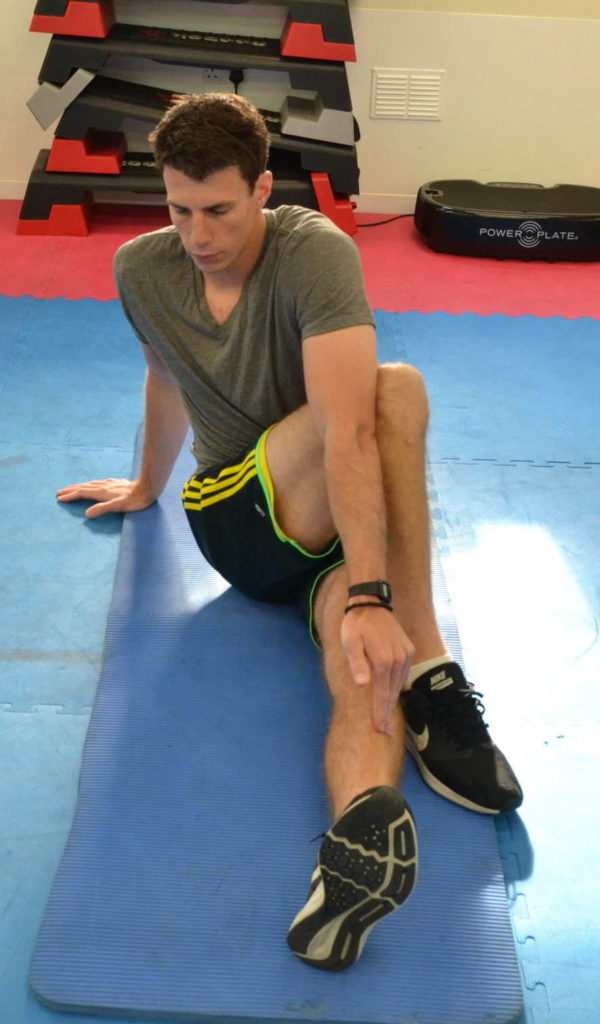
By relieving tension in the glutes and allowing the pelvis to find its natural “balance”, the pressure on the lower back is reduced. This allows a better range of motion in the spine when you bend and twist, and freedom for leg movement.
Who is this stretch for?
This stretch is great for anyone who feels symptoms radiating to their buttock. It is also a great stretch for people who are suffering from piriformis syndrome. The gluteus (or buttocks) get very tight in people who stand with a number of different, common postures and should be stretched off regularly.
What does this stretch do?
Stretching the non-painful side in this stretch is a great method to avoid worsening your symptoms while still getting relief.
How to do this stretch:
- Sit on the floor with both legs out in front of you.
- Cross your right leg over your left leg so your right foot is to the left of your thigh.
- Keep your core strong, but twist your torso away from your bent leg.
- You can place your right hand on the ground for balance and support.
- Look over your right shoulder and hold the stretch for 30 seconds.
- You may use your other arm prop you on your leg, and gently push to increase the stretch ONLY IF it’s comfortable.
- Repeat on the other side, then repeat the entire sequence four times.
- Tip: Keep your buttock firmly in place and flat on the ground.
#2: Walking
Some people worry that movement will create more problems with their pain. Due to the low impact and low risk of injury, walking is associated with many health benefits and can hasten recovery time (Hendrick et al. 2010).
Smaller and more frequent walks are proven to be best for buttock pain. A great recommendation is every 2 to 3 days for 15 to 45 minutes (Hendrick et al. 2010). I encourage you to take your time and have some stops along the way.

If you are pain-free you can increase your walking distance as you feel comfortable. To reduce chances of hurting yourself further make sure you’re warm enough with clothing for your walk, wearing appropriate footwear suited to how and where you walk, and ensuring you walk on solid and predictable ground to eliminate the chance of tripping or falling.
Always consult with your doctor first if you are concerned about walking with regards to your own health.
#3: Pain Management Medication
Pain medication can be a way to temporarily alleviate pain. However, we don’t recommend that you take pain relief for too long as a form of treatment for pain such as buttock pain. It is typically my goal to get clients off their pain medications.
Simply because that pain and inflammation is likely being caused by another concern such as sciatica, piriformis, bulging discs or many other possible causes, it’s most important that you first speak to your doctor to gain a proper diagnosis first. Anti-inflammatory medication such as ibuprofen is accessible, affordable and may the best option for many people. However, pain medication is highly individualised and needs to be approached with professional guidance.

Ibuprofen cream treatments such as Voltarol exist and can be applied topically. Always apply creams such as Voltarol with care, and observe to ensure they don’t aggravate the area. Get professional advice before starting any topical treatment for buttock pain.

Click HERE to view Voltarol cream for buttock pain relief Amazon US
Click HERE to view Voltarol cream for buttock pain relief Amazon UK
Here is an article about certain pain relief medications that are commonly used for sciatica and buttock pain.
These recommendations are based on information purposes and should not be used as personalised guidance. Always speak with your GP before taking medication.
#4: Supplements
Using supplements can be a controversial topic. Personally, I feel that there is certainly some value to the use of supplements. I have written an article Supplements for Sciatica, if you are struggling with buttock pain related to sciatica this may be of some use to you. Supplements are often a great way to complement other treatments for medical injuries.
Based on the probability that buttock pain is related to either inflammation or nerve damage, I often recommended the three supplements below.
Please be aware that we are part of the Amazon Affiliate programme. This page may contain Amazon affiliate links, so if you choose to purchase a product that we recommend through a link on this page, we will receive a small commission at no extra cost to you. This helps us keep Overcome Sciatica alive! Thank you for your support. Please be assured that we only ever recommend products that we truly believe can help.
#1 Turmeric with Black Pepper
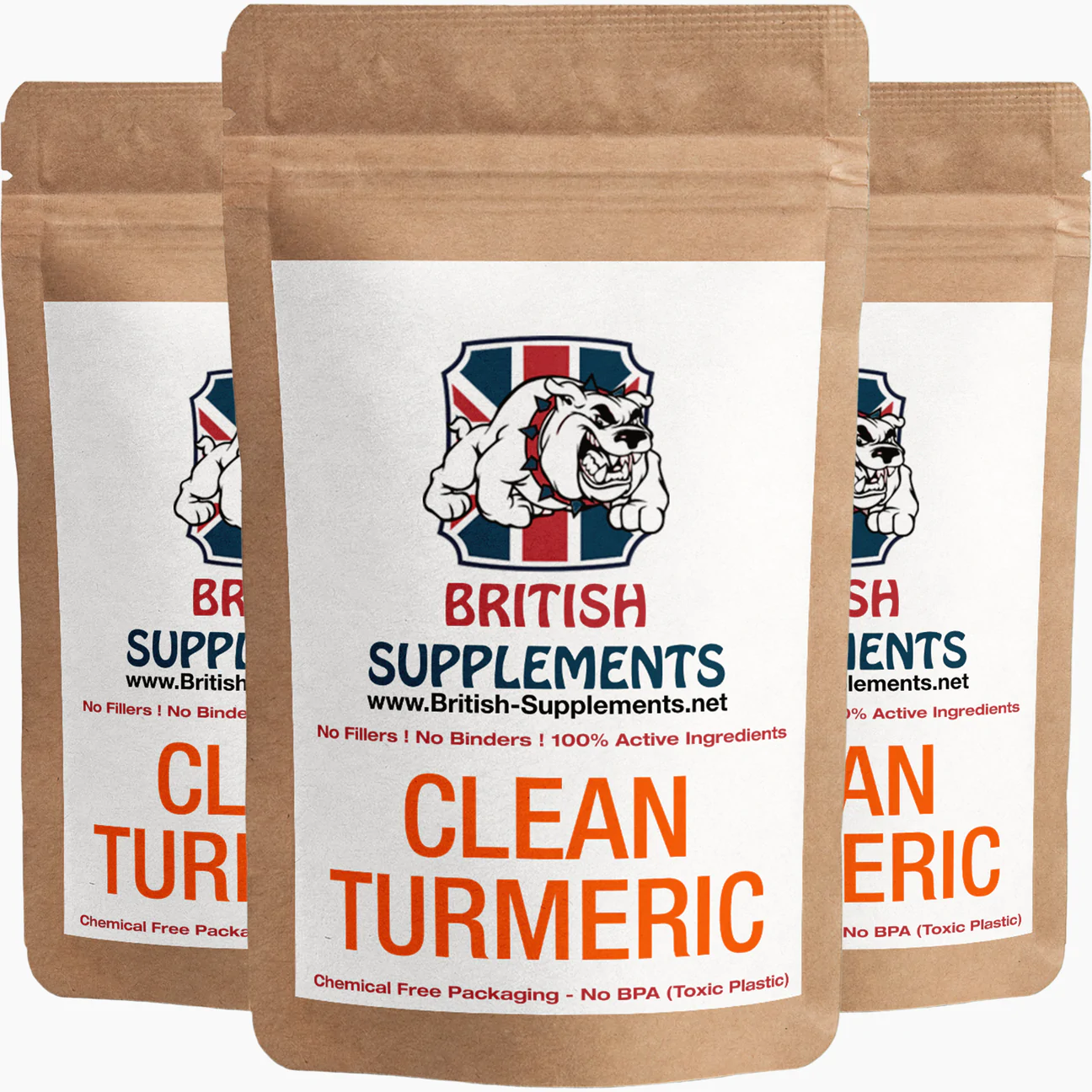
One of the main supplements worth discussing are certainly those with anti-inflammatory properties. Inflammation on its own can cause a great deal of pain and discomfort in the affected area. It can also slow down healing time.
‘Curcumin’ is an active ingredient in Turmeric that acts as a strong anti-inflammatory and antioxidant within the body(Jurenka, 2009). Compared to other supplements and medications, turmeric has been described as less expensive and much safer to use (Aggarwal et al., 2009). For improved absorption, you should consume your turmeric with pepper.
Click HERE to view this supplement for buttock pain on British Supplements.
Click HERE to view the closest match to this supplement for buttock pain on Amazon US.
#2 Omega-3

Omega-3 has been shown to have a whole slew of benefits, including better heart health, reduced inflammatory response and a reported benefit to the joints (Maroon & Bost, 2006). Consumption of omegas has been linked to reduced rates of prescription medications and there have been no significant side effects reported in studies.
I personally use these Omega-3 tablets and have never had any problems with a fishy aftertaste.
Click HERE to view these supplements for buttock pain on Amazon.
Click HERE to view the closest match to this supplement for buttock pain on Amazon US.
#3 Vitamin B-12

Vitamin B12 plays a vital role in keeping our nerves healthy. Vitamin B12 also promotes the regeneration and growth of nerve cells. Sciatica, which causes nerve pain, numbness or tingling, can actually be caused and made worse by deficiencies of vitamin B12 in the body.
Click HERE to view this supplement for sciatica on Amazon UK
Click HERE to view the closest match to this supplement for sciatica on Amazon US.
Always speak with your doctor first before taking any supplements. Supplements can have adverse effects when used with other medications. Always check for allergen guidance on consumable products.
#5: Pain Management Tools
There are a variety of pain management tools available to help relieve your pain. Below we have listed some recommended aids for day-to-day pain management. These may significantly improve your buttock, back and leg pain.
1. TENS Machine
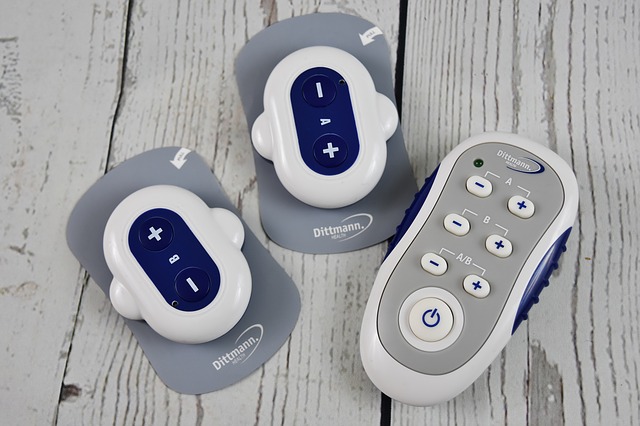
A TENS Machine is a small electronic device that works by delivering small electrical currents as a form of pain relief or pain management. You can find affordable TENS Machines at your local pharmacy or online.
I have previously written a blog where I tried and reviewed the best TENS Machines I believe based on performance, quality and price point. If you think a TENS machine would be a suitable investment for your needs I recommend learning enough about them so you have confidence in what machine is best suited for your needs. Read the 10 Best TENS Machines for Sciatica Pain Relief in 2022, here.
2. Donut Cushion

If you are someone who does a lot of sitting at work (i.e. Office Job, Driver) and you think this may be the cause of your buttock pain, you should consider a Donut Cushion for your desk or car. I have personally recommended this Donut Seat Cushion previously and think it’s an excellent support cushion for pressure relief.
3. Hot / Cold Pack
Hot and cold packs are a fantastic thing to have at your disposal.
A cold or cooling pack decreases blood flow and therefore can reduce swelling or fluid retention in an area. It can also decrease muscle spasm caused by affected nerves.
A Heat Pack promotes blood flow and helps relax muscles. Ice can be used for the purposes of cold therapy.
Here’s one I frequently recommend for my clients. Alternating between hot and cold has been known to reduce exercise based injuries.

Apply for no longer than 15-20 minutes at a time. Always protect the skin.
If Buttock Pain Is Not Going Away: Speak to a Professional
I always strongly recommended that you first speak with your GP. This will enable you to explore all of your options and receive a referral to your preferred treatment option within the NHS.
A Physiotherapist can help diagnose your concern, and create a treatment plan that is a whole-body approach. This might include exercising, stretching and assisted pain management tools.
Does Buttock Pain Go Away?
Of course it can. While experiencing ongoing pain can take a toll on your mental health. It’s important you recognise that with the correct treatment and guidance there is promise to heal the cause of your Buttock Pain.
In Summary
There are treatment options for the cause of your Buttock Pain. The best advice is that you seek professional assistance from your GP and a specialist like a Physiotherapist. But in the meantime you can use stretching and walking exercises to reduce pain and improve healing, assist healing with the use of appropriate supplements and pain management tools best suited to you to help reduce your symptoms.
Important notice: The treatments listed here are not a personal recommendation. They are merely a discussion about the available research and products with the best success rates based on the most up-to-date research. You should always check with your GP before starting any new supplement, taking additional medication or beginning a new exercise routine. Supplements should in no way be used as a substitute for medication. You should always consult your doctor before starting with a new supplement to check that it won’t have harmful interactions with your current medication or medical condition. You should also check for allergy information specific to you for each of these supplements and avoid them if in any doubt. This report only states the potential benefits of these products as claimed by the manufacturer and the people that use them and I cannot guarantee any specific results for those who start using them. I also cannot be held accountable for any problems that should arise from the use of these supplements.
Reference List:
Cooper, G. (2019). Cold and Heat Therapy for Sciatica, Spine Health, https://www.spine-health.com/conditions/sciatica/cold-and-heat-therapy-sciatica
Hendrick P, Te Wake A. M., Tikkisetty A. S., Wulff L., Yap C. & Milosavljevic S. (2010), The effectiveness of walking as an intervention for low back pain: a systematic review. National Library of Medicine. 19 (10). 1613-1620.
Jurenka, J.S. (2009) Anti-inflammatory properties of curcumin, a major constituent of Curcuma longa: a review of preclinical and clinical research. Altern Med Rev. 14(2). 141- 153.
Maroon, J.C., Bost, J.W. (2006). Omega-3 fatty acids (fish oil) as an anti-inflammatory: an alternative to nonsteroidal anti-inflammatory drugs for discogenic pain. Surg Neurol. 65(4). 326-331.
National Health Service (2020), Sciatica, viewed 9 November 2022, <https://www.nhs.uk/conditions/sciatica/>

